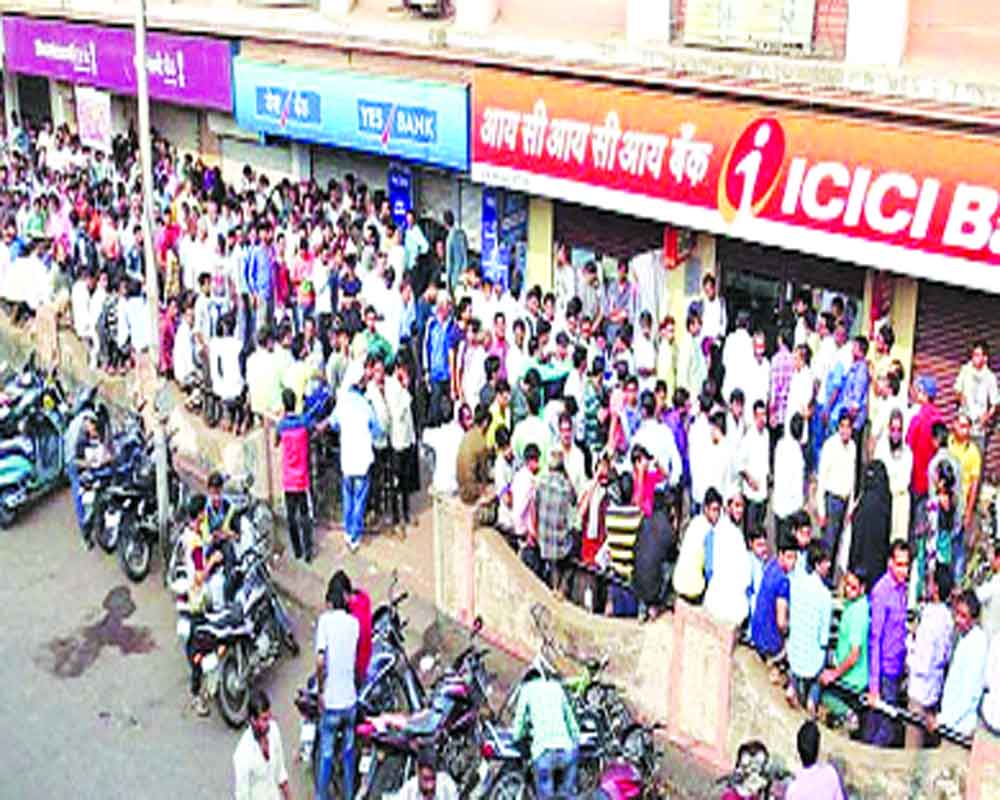Demonetisation was a major reform that helped in laying the foundation for inclusive and sustainable growth
Delivering a majority 4:1 verdict on January 2, 2023, the Supreme Court (SC) upheld the constitutional validity of the demonetization announced by the prime minister, Narendra Modi on November 8, 2016. But the controversy refuses to die down. Reiterating its stance that the decision was disastrous, the grand old party (GOP) opines that the question of ‘whether the stated objectives of demonetization have been achieved’ was not examined by the SC.
Being a policy matter that lies within the exclusive domain of the Union government/executive, its examination by the judiciary was not required; SC’s mandate was to deliver its verdict on the legality of the decision which it did. As for the impact of demonetization, there is a need for an objective and dispassionate analysis.
A major plank underlying the move was to curb the menace of black money — a jargon for income generated in cash that goes unrecorded and no tax is paid. Working on the premise that most of such cash was held in 1000/500 denomination notes, Modi declared these notes as illegal meaning that the Reserve Bank of India (RBI) won’t be under an obligation to discharge its liability to the holders of such notes. Put simply, the worth of these notes would become ‘NIL’.
Modi acted in the belief that those who had accumulated cash by indulging in undesirable activities such as a bureaucrat taking bribe money instead of a favor extended to private entities etc. (or a person not disclosing his income and paying tax) won’t have the courage to go to the bank as this would come on the radar of the income tax (I-T) department and other agencies. So, they would let these notes be annihilated while sitting in their vault.
The mandarins in the finance ministry were hoping that notes worth over Rs 300,000 crore won’t come back leading to corresponding gain for the RBI by way of a reduction in its liabilities for that amount. A portion of this mammoth gain, in fact, of it, could be transferred to the Union government to be used by the latter for reducing its fiscal deficit or funding infrastructure projects and welfare schemes. But things didn’t pan out as expected. As on November 8, 2016 (the day, demonetization was announced), the total value of 1000/500 notes with the public was Rs 1540,000 crore.
Of these, notes worth Rs 1530,000 crore were either deposited or exchanged for new currency. Thus, notes worth Rs 10,000 crore didn’t come back, a tiny fraction of what was expected. The cost of printing new currency to replace the banned notes and putting up infrastructure to deliver being around Rs 8,000 crore, the RBI ended up with a meager gain of Rs 2000 crore.
However, merely on this basis, we can’t say that the exercise was a damp squib as it unleashed a host of other benefits. A close look at the numbers reveals that a mere 110,000 persons deposited Rs 400,000 crores or Rs 3.6 crore per person.
A release by the ministry of corporate affairs (MCA) on November 5, 2017, said “Preliminary inquiry based on information received from 56 banks in respect of 35,000 companies involving 58,000 accounts has revealed that an amount of over Rs 17,000 crore was deposited and withdrawn post demonetization,” In one case, a company which had a negative opening balance on November 8, 2016, deposited and withdrew Rs 2,484 crore post demonetization.
Thus, a mountain of black cash was brought to the banks and many of its carriers made attempts to convert it into white. How far did they succeed? This is a matter of probe. But a big positive is: banks got hundreds of thousands of crores to increase lending.
Under ‘Operation Clean’, 1.8 million accounts in which ‘suspicious’ deposits of over Rs 300,000 crore were made, were subjected to intense scrutiny by the I-T department and made to pay tax plus penalty. Meanwhile, the government offered them a less stringent option of paying 50 percent tax plus a 25 percent interest-free loan to PM Garib Kalyan Yojna (PMGKY) from December 16, 2016, to March 31, 2017. This was instead of a person accepting the wrong and agreeing to be an honest taxpayer in the future.
This led to buoyancy in tax collection. During the 2017-18 assessment year (AY), the total number of return filers was about 70 million - almost double the number during AY 2014-15 at 36 million. Of 34 million filers added during the intervening period, around 16 million were added during AY 2017-18 alone. Correspondingly, the direct tax revenue (DTR) surged from Rs 850,000 crore during 2016-17 to over Rs 1000,000 crore during 2017-18.
The disclosures also helped in nabbing shell companies that were being used for laundering black money. Over 200,000 such companies have been deregistered. It has also helped the I-T department intensify searches and seizures leading to the disclosure of unaccounted income worth about Rs 125,000 crore.
(The writer is a policy analyst. The views expressed are personal.)


























